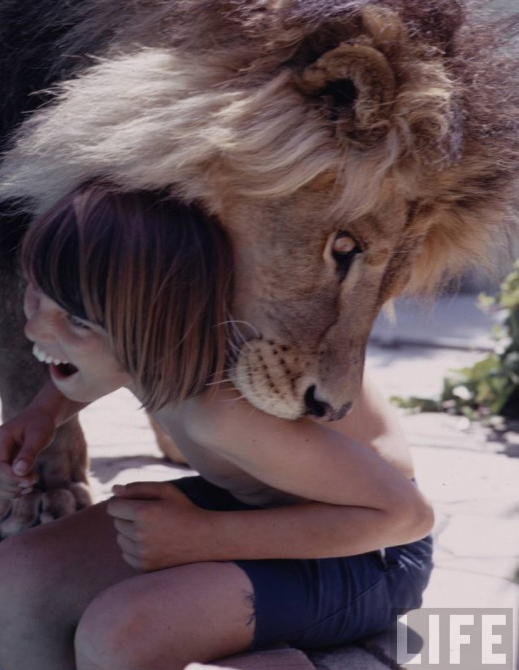
+- WildFact (https://wildfact.com/forum)
+-- Forum: Nature & Conservation (https://wildfact.com/forum/forum-nature-conservation)
+--- Forum: News, Events & Updates (https://wildfact.com/forum/forum-news-events-updates)
+--- Thread: Bigcats News (/topic-bigcats-news)
Pages:
1
2
3
4
5
6
7
8
9
10
11
12
13
14
15
16
17
18
19
20
21
22
23
24
25
26
27
28
29
30
31
32
33
34
35
36
37
38
39
40
41
42
43
44
45
46
47
48
49
50
51
52
53
54
55
56
57
58
59
60
61
62
63
64
65
66
67
68
69
70
71
72
73
74
75
76
77
78
79
80
81
82
83
84
85
86
87
88
89
90
91
92
93
94
95
96
97
98
99
100
101
102
103
104
105
106
107
108
109
110
111
112
113
114
115
116
117
118
119
120
121
122
123
124
125
126
127
128
RE: Bigcats News - Roflcopters - 06-25-2015
Its a misprint, he was barely two year old. RIP
RE: Bigcats News - Pckts - 06-25-2015
(06-25-2015, 01:11 PM)'Roflcopters' Wrote: Its a misprint, he was barely two year old. RIPCorrect sir, nice info.
Check out what I just sawNikhil AbhyankarSanctuary Asia Follow · Yesterday near Nagpur, India ·
A male tiger cub was found dead yesterday in the jamni beat of Tadoba Andhari Tiger Reserve.. He supposedly died due to a fight with another male tiger who was seen nearby...Also spotted nearby was a sambhar deer kill which may have been the cause of the fight.. Postmortem report awaited... The possibility of poaching has been ruled out as all the body parts have been found intact...

*This image is copyright of its original author
Nikhil Abhyankar As per unconfirmed reports it is male cub of Kolara buffer tigress...
It is stated that he was a really aggressive male cub which could be the reason why he thought he could take on a adult male tiger over a kill. He paid the price for it, sad to see but its as natural as it gets.
RE: Bigcats News - shaileshsharadnaik - 06-29-2015
(06-25-2015, 09:38 PM)'Pckts' Wrote:friends, after checking various photos of choti tara cubs, i dont think it was him. This is some differenet tiger. only time will tell(06-25-2015, 01:11 PM)'Roflcopters' Wrote: Its a misprint, he was barely two year old. RIPCorrect sir, nice info.
Check out what I just sawNikhil AbhyankarSanctuary Asia Follow · Yesterday near Nagpur, India ·
A male tiger cub was found dead yesterday in the jamni beat of Tadoba Andhari Tiger Reserve.. He supposedly died due to a fight with another male tiger who was seen nearby...Also spotted nearby was a sambhar deer kill which may have been the cause of the fight.. Postmortem report awaited... The possibility of poaching has been ruled out as all the body parts have been found intact...
*This image is copyright of its original author
Nikhil Abhyankar As per unconfirmed reports it is male cub of Kolara buffer tigress...
It is stated that he was a really aggressive male cub which could be the reason why he thought he could take on a adult male tiger over a kill. He paid the price for it, sad to see but its as natural as it gets.
RE: Bigcats News - Apollo - 06-29-2015
(06-25-2015, 09:38 PM)'Pckts' Wrote:(06-25-2015, 01:11 PM)'Roflcopters' Wrote: Its a misprint, he was barely two year old. RIPCorrect sir, nice info.
Check out what I just sawNikhil AbhyankarSanctuary Asia Follow · Yesterday near Nagpur, India ·
A male tiger cub was found dead yesterday in the jamni beat of Tadoba Andhari Tiger Reserve.. He supposedly died due to a fight with another male tiger who was seen nearby...Also spotted nearby was a sambhar deer kill which may have been the cause of the fight.. Postmortem report awaited... The possibility of poaching has been ruled out as all the body parts have been found intact...
*This image is copyright of its original author
Nikhil Abhyankar As per unconfirmed reports it is male cub of Kolara buffer tigress...
It is stated that he was a really aggressive male cub which could be the reason why he thought he could take on a adult male tiger over a kill. He paid the price for it, sad to see but its as natural as it gets.
RE: Bigcats News - Pckts - 06-29-2015
(06-29-2015, 06:46 PM)'shaileshsharadnaik' Wrote:(06-25-2015, 09:38 PM)'Pckts' Wrote:friends, after checking various photos of choti tara cubs, i dont think it was him. This is some differenet tiger. only time will tell(06-25-2015, 01:11 PM)'Roflcopters' Wrote: Its a misprint, he was barely two year old. RIPCorrect sir, nice info.
Check out what I just sawNikhil AbhyankarSanctuary Asia Follow · Yesterday near Nagpur, India ·
A male tiger cub was found dead yesterday in the jamni beat of Tadoba Andhari Tiger Reserve.. He supposedly died due to a fight with another male tiger who was seen nearby...Also spotted nearby was a sambhar deer kill which may have been the cause of the fight.. Postmortem report awaited... The possibility of poaching has been ruled out as all the body parts have been found intact...
*This image is copyright of its original author
Nikhil Abhyankar As per unconfirmed reports it is male cub of Kolara buffer tigress...
It is stated that he was a really aggressive male cub which could be the reason why he thought he could take on a adult male tiger over a kill. He paid the price for it, sad to see but its as natural as it gets.
"Nikhil Abhyankar @ Atul Dhamankar.... Can't judge by these snaps as the angles of both the dead and the one u posted r completely different.. As per Mr Garad the cub was of the jamni tigress... He can't be wrong... Also spoke to a few guides and gypsy drivers of Kolara gate.. They also said the same thing..."
RE: Bigcats News - Pckts - 06-29-2015
Jatin PatelSanctuary Asia4 mins · Sad news today 8am at sindewahi - pathri road...
In Gosikhurd canel
Post mortem done at sindewahi
Territorial fight is cause of death...deep canine injury on neck...first cervical vertebrae broken..male 2 year old weight 85,kg

*This image is copyright of its original author

*This image is copyright of its original author
Another youngster has been killed way to early, its a tough life for a nomadic big cat thats to small to establish territory, they always say that is the most dangerous time.
RE: Bigcats News - Pckts - 06-30-2015
Fewer than 4,000 tigers roam across the Asian continent today, compared to about 100,000 a century ago. But researchers are proposing a new way to protect the big cats: redefine them.The proposal, published this week in Science Advances, argues current taxonomy of the species is flawed, making global conservation efforts unnecessarily difficult.There are up to nine commonly accepted subspecies of tigers in the world, three of which are extinct. But the scientists' analysis, conducted over a course of several years, claims there are really only two tiger subspecies: one found on continental Asia and another from the Indonesian islands of Sumatra, Java and Bali.[With one male left, the northern white rhino species is on the brink of extinction]"It's really hard to distinguish between tigers," said Andreas Wilting, the study's lead author from the Leibniz Institute for Zoo and Wildlife Research. "There has been no comprehensive approach. The taxonomies are based on data from almost a hundred years ago."The study, described by its authors as "the most comprehensive analysis to date," looked at the mitochondrial DNA, skulls, skin markings, habitat and prey of all nine tiger subspecies. It found a high degree of overlap in these traits between the continental tigers — spanning from Russia to Southeast Asia — and between the island-dwelling "Sunda" tigers.[Endangered whales are dying off in Alaska, and scientists are racing to find out why]Nearly $50 million is spent worldwide to preserve the big cat each year, according to the Science Advances study, and there has been some progress made.The Amur tiger, found in Russia, has been on the rise over the past decade, with as many as 540 of the tigers in the wild, up from between 423 and 502 a decade ago, according to the World Wildlife Fund. Likewise the Bengal tiger population, was reported to have increased by 30 percent since 2010, according to India’s National Tiger Conservation Authority.The hope is that by simplifying the taxonomy, conservationists would have more flexibility in preserving the animals, such as by moving tigers from one area to the next. This is especially important for the South-China tiger, which is considered critically endangered numbers less than 100 in the wild.
"They've gotten down to such low numbers that there's really little hope for them," Wilting said.The study reinforces evidence that tigers are perhaps the least diverse big cat in the world. It also supports a theory that there was a massive population decline after a super-eruption took place in Sumatra about 73,000 years ago, leaving only a single ancestor for all modern tigers from the South China area.But in a field where one of the biggest goals is to preserve the diversity in tigers, convincing people that tigers aren't really that diverse can be a challenge. This is not the first time tiger taxonomy has been challenged, but earlier proposals have had trouble gaining ground due to a lack of evidence.At the heart of the debate is a concept called "taxonomic inflation," or the massive influx of newly recognized species and subspecies. Some critics blame the trend in part on emerging methods of identifying species through ancestry and not physical traits. Others point to technology that has allowed scientists to distinguish between organisms at the molecular level.[Nearly 200,000 ‘new’ marine species turn out to be duplicates]"There are so many species concepts that you could distinguish each population separately," Wilting said. "Not everything you can distinguish should be its own species."This concept of inflation becomes more pressing when animal habitats are destroyed. Populations affected by habitat loss often become increasingly isolated and more susceptible to genetic drift. Because there are fewer genes in the population pool, the animals change more rapidly and becomes more distinct — sometimes for the worst.This was especially true in the case of the Florida panther in the early 1990s, when the species was reduced to fewer than 30 individuals in the wild. Rampant inbreeding left the big cat inundated with genetic defects, such as heart problems and reproductive issues.[California highways make for meaner (and fewer) mountain lions]Efforts to preserve the animal through captive breeding proved unsuccessful. Florida researchers, frantic to save the long-held state symbol, decided to take controversial action by introducing eight female Texas cougars in 1995.The result has been considered a success, as the cougars, a close genetic relative to the panther, were able to refresh the gene pool and stave off extinction. While the Florida panther is still considered endangered, there are now somewhere between 100 and 180 in the wild.
Still, the case has sparked debate on whether the panther remains a pure subspecies. That's important because it may affect the priority placed on protecting the cat and its habitat by U.S. Fish and Wildlife Service."It really depends on what you define a subspecies to be," said Dave Onorato, a biologist with the Florida Fish and Wildlife Conservation Commission who worked on the panther restoration project. "Perhaps they're now more close to what they were before they became inbred."
Onorato said the Florida panther case could be held up as an example for people trying to protect big cats around the world, including the most stressed tiger populations.Worldwide conservation efforts have been put into place to double tiger counts by 2022, but many tiger populations remain under threat by poachers, habitat loss and climate change, according to the World Wildlife Fund.
http://www.washingtonpost.com/news/speaking-of-science/wp/2015/06/26/to-save-big-cats-from-extinction-scientists-say-we-need-to-redefine-tiger/?sf10431610=1
RE: Bigcats News - sanjay - 07-02-2015
Rwanda gets seven lions from South Africa to rehabilitate the country’s ecosystems and enhancing the tourism sector.
Seven lions, including two males, arrived in the country from South Africa, yesterday, in what conservation activists and officials say will go a long way in rehabilitating the country’s ecosystems and enhancing the tourism sector.
The lions, which arrived at the Kigali International Airport aboard a chartered flight, were immediately transported by road to Akagera National Park in Eastern Province, where the endangered species were decimated about two decades ago as people increasingly encroached on the savannah park.
Officials in charge of tourism at Rwanda Development Board said last week that the five lionesses were donated by andBeyond Phinda Private Game Reserve and the two males by Tembe Elephant Reserve, an Ezemvelo KZN Wildlife protected area.
Located in the South African province of KwaZulu-Natal, both game reserves are relatively small and confined, necessitating for occasional transfer of surplus lions to avoid overpopulation.
“In the prime of their lives, the lions have been selected based on future reproductive potential and their ability to contribute to social cohesion – young adults, sub-adult females, young adult males with different genetics – and associations such as adult female with sub-adult female and adult male coalitions,” RDB said in a statement.
On arrival in Akagera National Park, the lions were due to be placed in a specially constructed 1,000 square metre boma in the north of the park.
Split into two separate enclosures, the perimetre features a three-metre high chain-linked electric fence. A water reserve has been constructed within the boma and the lions will be fed game meat while in the enclosure.
They are to be quarantined for at least 14 days during which they will be continually monitored, before being released into the wilderness of the park.

*This image is copyright of its original author
“The return of lions to Akagera is a conservation milestone for the park and the country,” said Peter Fearnhead, the chief executive of African Parks, which managers the Akagera National Park.
The beasts were tranquilized on June 29, placed in individual slatted, pen-crates and loaded onto trucks for their journey to OR Tambo International Airport in Johannesburg, South Africa, officials said.
In Akagera, the lions will be fitted with satellite collars, which will enable the park management team to monitor their movements and reduce the risk of entering community areas.

*This image is copyright of its original author
A crate bearing one of the lions is offloaded from a chartered plane at Kigali International Airport. (Athan Tashobya)
The park fence has been predator-proofed as a way to check human-wildlife conflict and poaching.
“The return of lions will encourage the natural balance of the ecosystem,” Amb. Yamina Karitanyi, the chief tourism officer at RDB, said last week. “Rwandans and visitors will now have the chance to see one of Africa’s ‘Big Five’ (animals) in one of the continent’s most diverse national parks, cementing Rwanda’s status as conservation focused, all-in-one safari destination.”
Tourists will have a chance to start seeing the lions about two weeks from now, officials said.
Last year, Rwanda received $303 million from the tourism sector, representing a three per cent increase from the $293m earned in 2013, according to statistics from RDB.
Between July 2013 and June last year, Rwanda received 1.17 million visitors, compared to the previous year where 1.14 million tourists were recorded.
RE: Bigcats News - sanjay - 07-03-2015
Another sad incident take place in Kruger National Park.
PRIVATE Open Safari Vehicle (OSV) GUIDE ATTACKED BY A LEOPARD
A field guide working for one of the Open Safari Vehicle (OSV) companies operating in the Kruger National Park was attacked by a leopard today (Thursday, 2 July 2015) during a game drive. The incident happened just after 13:00 at Alfa Loop on the H4-1 road just outside Skukuza Camp.
According to eye witnesses, the guide was with about 6-8 tourists on his OSV and watching the leopard some two metres from the vehicle. The animal cunningly disappeared, probably went around the guide’ (driver)’s side while the group was still searching for it. The guide had relaxed on the OSV when suddenly the leopard leapt and grabbed his arm, trying to jump into the vehicle. Everybody in the OSV started hitting the leopard with any object they had with them. The leopard would not let go of the guide’s arm; until a tourist from another vehicle rushed and repeatedly used his vehicle to scare off the animal and that is when it eventually let go.
"We would like to thank the tourist from another vehicle for his quick and decisive action as he saved the guide and tourists’ lives. It is suspected that the leopard was fighting with another one as its hind was badly injured; the other leopard was spotted in the area watching from a distance," said GM: Communications and Marketing, William Mabasa.
A resident medical doctor has since treated the guide for injuries.

*This image is copyright of its original author
Cunning Leopard grab the hand of Guide

*This image is copyright of its original author
RE: Bigcats News - Apollo - 07-05-2015
TWO LIONS AND A TIGER

*This image is copyright of its original author
A must read article guys.
So don't miss it, read and see more pics from the link below.
https://manilenya222.wordpress.com/tag/caring-for-tigers-and-lions/
RE: Bigcats News - Pckts - 07-05-2015
(07-05-2015, 07:51 PM)'Apollo' Wrote: TWO LIONS AND A TIGER
*This image is copyright of its original author
A must read article guys.
So don't miss it, read and see more pics from the link below.
https://manilenya222.wordpress.com/tag/caring-for-tigers-and-lions/
These are the stories that give me hope.
For all of mans cruelty there is equal compassion if not more.
TFS the story to go along with the images we have seen for so long.
RE: Bigcats News - Pckts - 07-07-2015
Ranth is having so serious Issues at the moment, changes need to happen asap.
The Case of 15 missing Tigers: Ranthambore National Park Authorities believe Poaching could be the Reason.
http://www.dailymail.co.uk/indiahome/indianews/article-3015458/15-Ranthambore-tigers-vanish-Park-authorities-believe-poaching-reason.html
Between the "VIP" overcrowding situation, Ustaad and this, Ranthambore needs some good news, they need to grab the bull by the horns and make some serious changes and help the Forest Guards get a handle on this.
RE: Bigcats News - Apollo - 07-10-2015
Story behind the movie ROAR

*This image is copyright of its original author

*This image is copyright of its original author

*This image is copyright of its original author

*This image is copyright of its original author

*This image is copyright of its original author
For more pics and the entire story, check out the link below.
http://www.messynessychic.com/2012/02/22/oh-dont-mind-our-pet-lion/
RE: Bigcats News - Apollo - 07-12-2015
Two Bandhavgarh 'man-eater' tigers to be released into the wild
After serving over eight months 'sentence' in captivity, two tigers will be released into the wild from the Bandhavgarh Tiger Reserve. The tigers had been caught by the Bandhavgarh park management following a public outcry after the big cats allegedly killed four humans, besides 41 cattle, in the Khitauli range of the reserve.
The wildlife authorities claim the tigers have been weaned off hunting and could be released back into the wild. According to sources, one of the tigers would be released in the Satpura National Park and the other in the Sanjay Gandhi National Park, where tiger density was lower than Bandhavgarh.
The tigers, both siblings, aged about three years, were with their mother till October last year."Of the total 45 kills the tigers made while they were with their mother, they killed 41 cattle and four humans…The three tigers (required) to hunt frequently as they had almost attained maturity and required more food," said Bandhavgarh field director, CH Murlikrishna.
The two big cats were tranquilised in October and kept at forested enclosures in Bandhavgarh where they are being reared in near wild conditions."The tigers were caught by the Bandhavgarh Tiger Reserve management and kept in separate enclosures at the park. They have been bred in semi-wild conditions, with minimal human contact.
They have now started killing natural wild prey and would be soon released in the wild in other national parks," chief wildlife warden (CWLW), MP, Narendra Kumar, said.The reserve authorities claimed that the tigers had killed three human beings mistakenly, while one man was killed deliberately and eaten.
http://www.hindustantimes.com/bhopal/two-bandhavgarh-man-eater-tigers-to-be-released-into-the-wild/article1-1363825.aspx
RE: Bigcats News - Pckts - 07-22-2015

*This image is copyright of its original author
Can anyone translate?